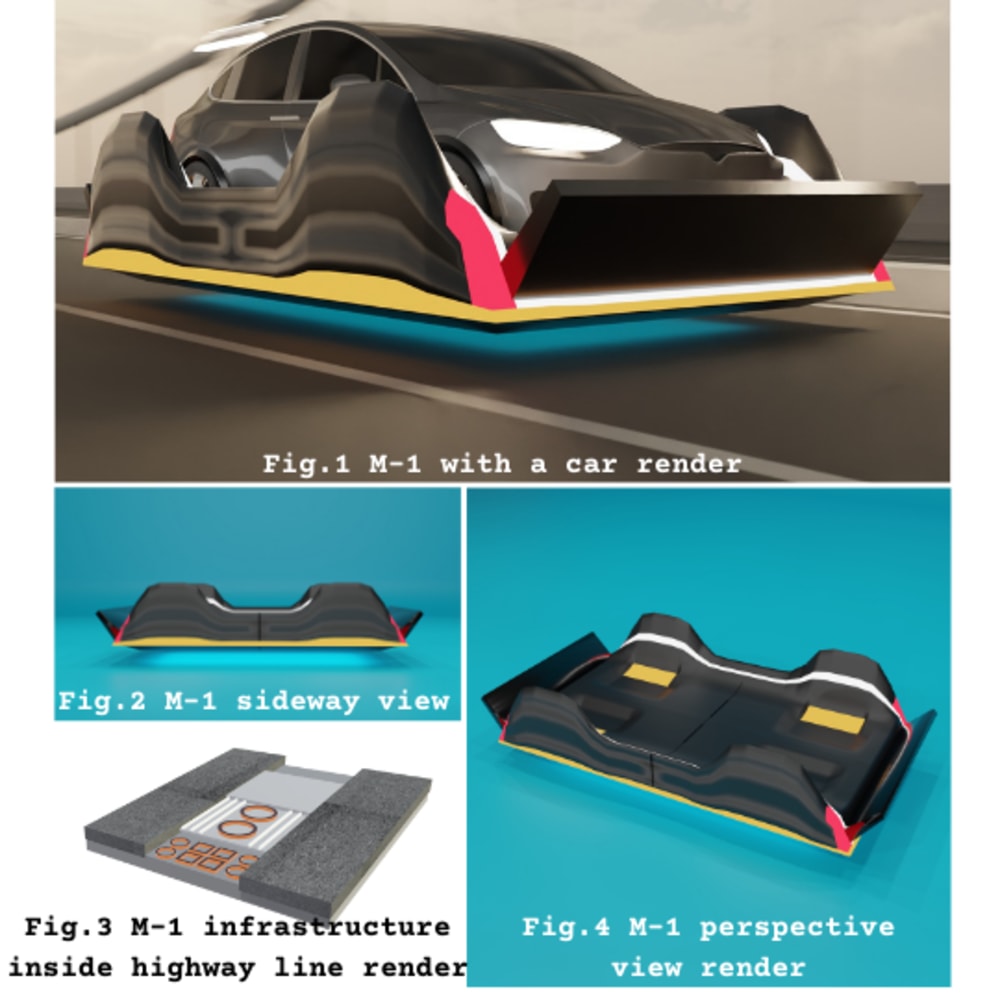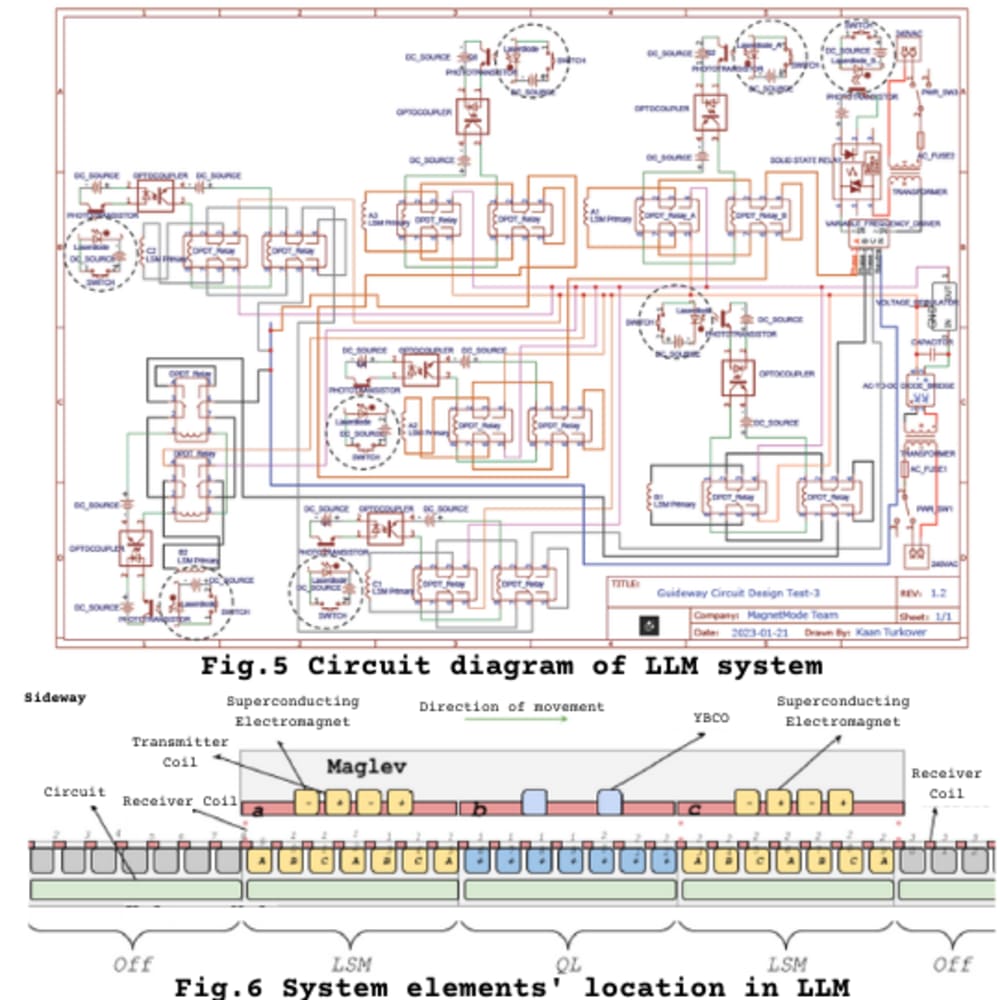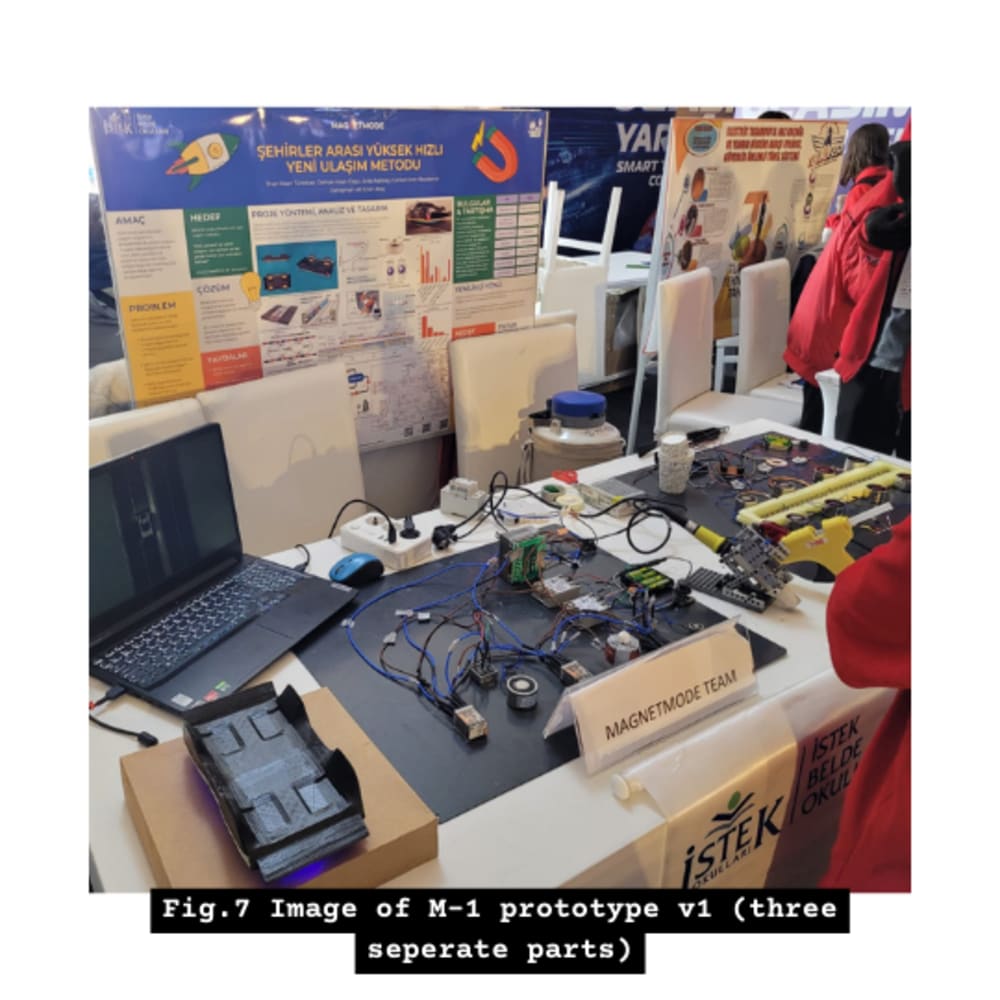Introducing M-1: Revolutionizing Personal Maglev Transportation
Transportation problems are complex, and the growing population presents a huge market. The global transportation industry is projected to grow from 8.2 to 13.64 billion dollars between 2022 and 2030. This demonstrates the increasing demand for mobility. That's why we developed M-1, the world's first module for personal vehicles on Maglev tracks. Our goal is to provide fast, safe, and convenient mobility for everyone, anytime and anywhere.
Maglev trains are known for their speed, efficiency, and payload capacity, making them an ideal solution for our goal. However, their high costs and infrastructure requirements have been challenging. Traditional maglev systems are bulky and cannot integrate into existing transportation networks, which means expensive new networks must be built from scratch, costing up to $220 million per kilometer. Such a cost makes it almost impossible to enable widespread usage.
To overcome these challenges, we have developed a compact infrastructure that can be integrated into existing highway lanes, and it's up to 32 times cheaper. By utilizing a unique circuit with relays, microcontrollers, coils, electromagnets and cooling systems we have achieved levitation using type-II superconductors and thrust using linear synchronous motors in the same system, at the same time, unlike traditional systems. Our guideway dimensions are only one meter wide and 0.2 meters deep. It allows you to reach a maximum speed of 125 m/s (with 250 Hz AC current) in your own car for intercity transportation.
With this groundbreaking technology, you can now travel between cities in just minutes. For instance, NYC to Washington DC takes only 53 minutes instead of the 223 minutes it would take by car. Similarly, Austin to Houston is reduced to 24 minutes from 150, and San Francisco to Los Angeles is only 90 minutes instead of the usual 360.
We also address the strain on natural resources in big cities. While improving mobility normally results in population growth and increase in usage of natural resources, by focusing on intercity transportation, and by reducing travel time to a few minutes between cities, people no longer need to live in cities where they work. Which means we alleviate pressure on resources in big cities, where workforce is high, and promote economic activity in smaller cities, creating a more balanced distribution of resources.
In addition, our manufacturing process involves collaboration with HTS suppliers, LN2 suppliers, carbon fiber manufacturers, copper processing plants, aluminum processing plants, refrigerator system manufacturers, and software development companies.
In summary, M-1 offers a transformative solution to transportation challenges. Our innovative and cost-effective infrastructure brings the benefits of maglev technology to existing highway lanes, enabling rapid and secure intercity travel while also enabling it for more widespread usage. By encouraging population shifts from big cities to smaller ones, we alleviate resource strain and promote balanced development. With M-1, fast, safe, and convenient mobility is within reach for everyone.
P.S. We built our prototype v1 for just a thousand dollars.
Video
Like this entry?
-
About the Entrant
- Name:Emine Yelda Bingul
- Type of entry:teamTeam members:
- Ilhan Kaan Türköver
- Gürkan Eren Bozdemir
- Osman Kaan Ezgü
- Software used for this entry:SOLIDWORKS, Fusion360, Blender, EasyEDA
- Patent status:pending









